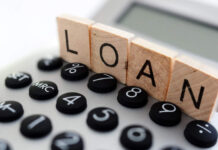Running a business is no easy feat. Not to mention the hassle of managing everything from your employees to clients and, the toughest of all, finances. But now, business owners can enjoy a little bit of peace thanks to technological advancements.
It is specifically true for businesses operating in the real estate and services industry where you need to rent out equipment. So, if your business deals with renting or leasing properties or stuff, you can take advantage of lease accounting software – the latest addition in the financial sector.
The US apartment rental market generates upwards of $174 billion in revenue, with over 44 million rental properties in the country. Leasing, or exchanging money for access to an asset for a predetermined period, is often associated with renting building space, such as an apartment, office, or storefront. In the same way, a lease outlines the terms of an agreement. It is also common for companies to lease equipment, vehicles, machinery, and technology.
It is essential to track the financial impact that renting assets or leasing from others has on your business’s financial health. The lease accounting system is legally required and helps you run a successful, organized company. And the best way to achieve this is to understand lease accounting and fully utilize it.
What is Lease Accounting?
Leasing accounting is recording the financial impact of leasing activities for a company. A company’s financial statements must include leases that meet specific classification requirements. You can accomplish this by using lease accounting software.
With lease accounting software, the following information will be stored for each financial statement:
- A company’s balance sheet shows its resources, liabilities, and shareholder equity.
- In a cash flow statement, a company shows how much money it makes and loses over time.
- Expenses and income are shown on income statements over time.
Leases are recorded differently on financial statements depending on whether the lessor owns the asset and receives payment from the lessee or the lessee pays to use the lessor’s investment. A company’s assets and the impact of the lease on its overall financial health can be clearly assessed when these three documents are recorded correctly.
Leases are classified as operating or financing, depending on the length of the lease term, in your financial statements.
Functions Lease Accounting Software Serves in a Company
Now that you’re aware of what lease accounting is, let’s look at some of the functions it serves for the smooth running of a company.
Improved vendor management
Keeping track of vendors and contracts is one of the most challenging aspects of scaling a business. Your lease management software provides a 360-degree view of all contracts and alerts you of all important dates. As a result of spending less time administrating, you will be able to spend more time building relationships with vendors.
A better way to collaborate within your organization
A company with multiple departments can have difficulty collaborating without the right tools. The result can be bottlenecks in the lease management process that discourage those who might otherwise be engaged.
Multiple teams manage lease contracts, and these teams must have access to a centralized system in order to collaborate efficiently. Each department faces challenges and concerns. Data entry is so time-consuming that teams often cannot collaborate and develop interdepartmental processes.
One of the main secrets of lease accounting software is that it automates many labor-intensive tasks so teams can collaborate more effectively. With a centralized system, teams can also create a chart of accounts maintained across all leases and standard processes that make it easier to audit information.
Managing costs, budgeting, and spending better
With real-time data access and full visibility of costs and spending, lease management software helps you budget accurately and maximize your resources. The lack of a centralized system can lead to inaccurate or misleading financial information.
Stakeholders can make better leasing decisions with the right software because it gives a complete picture of all moving parts. Without this information, companies may be unable to make a good lease agreement, which can have long-term consequences for their financial performance.
Improve your decision-making process
A rapid pace characterizes today’s world, so staying on top of opportunities is of utmost importance. Due to manual entry issues and the need to analyze data, it is difficult for companies to make leasing decisions and take advantage of leasing opportunities quickly.
By using lease management software, leadership teams can immediately access the data they need to make better investment decisions. Furthermore, it provides automated reports that keep stakeholders updated on leases and enable them to track costs and spending.
The Way Forward
A clear picture of the organization’s financial and operational positions is imperative for any enterprise, and lease accounting is one of the most critical aspects. Using lease accounting software is particularly beneficial for businesses that lease real estate or equipment. It is useful for keeping track of rental income, lease agreements that contain terms and conditions, and modifications, for example. Furthermore, it will inform you of overdue payments, cancellations of contracts, and renewal dates.



































































